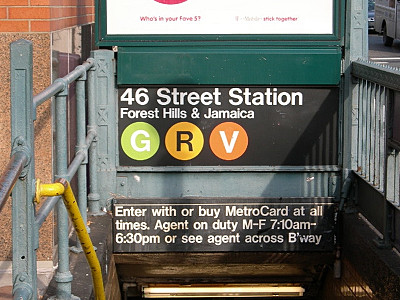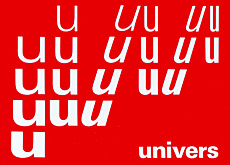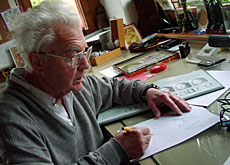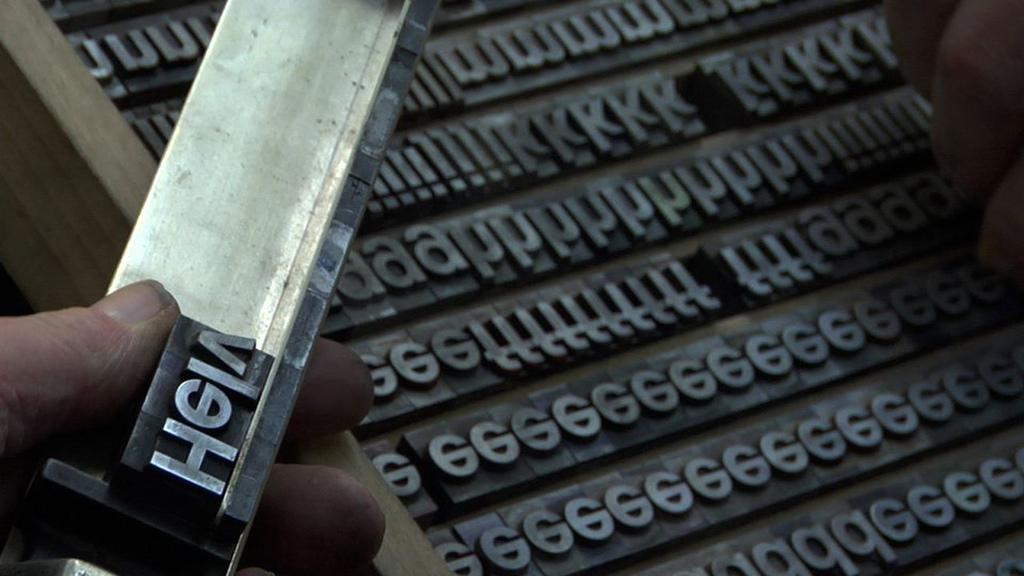How Helvetica moulded the urban landscape

Think of Swiss design and Le Corbusier's couch may spring to mind. But Switzerland is also the home of the Helvetica font, created 50 years ago.
To mark the anniversary, American filmmaker Gary Hustwit has produced a documentary devoted to the font.
“I had been interested in graphic design for years,” Hustwit told swissinfo.
“From there came the idea to do a documentary about fonts. With Helvetica’s 50 years coming up I found the focal point on which to concentrate.”
The documentary, also entitled Helvetica, includes interviews with designers and the son of the man who created the font.
Helvetica, which had a major impact in the 1960s and 1970s, has shaped the urban landscape like no other typeset before.
Its clear and simple form has contributed to its widespread use the world over – from Zurich to Milan, London, Berlin to Tokyo and New York. It can be seen wherever you look, on advertising boards, menus, and street or train signs.
In the 1970s, companies including the Swiss Federal Railways adopted the Helvetica font to boost their corporate identity.
International reputation
Part of the global success enjoyed by Helvetica was attributed to the reputation enjoyed by Swiss designers at the time. Swiss design was synonymous with excellence, precision and functionality.
A few years ago, art-book publisher Lars Müller produced a tribute to the Swiss typeset. Now, Hustwit’s documentary aims to find out why Helvetica has been so successful.
He tells swissinfo that the film is about people worldwide interacting with the font, which half a century on, still stirs mixed emotions.
Design history
After a few interviews, Hustwit recalls, it became clear that the documentary would be about the history of design over the past 50 years and not only about the typeset.
According to Hustwit, there are two ways of looking at design: “On one side there’s the Swiss style with its logic, clarity, rationale – against the emotional, more personal side.”
Most of the people interviewed for the documentary, Hustwit says, fell into one of the two categories.
The designers Hustwit interviewed have, over the past five decades, changed the way things around us look.
“The designers interviewed have influenced, or influence, whatever we now see every day in the urban landscape. Be it in the newspapers, on road and street signs, in train or subway systems,” he said.
When it was created, Helvetica was a font used solely by printers and designers. Today, in the computer age, millions around the world use it.
Popular
“When on location in Germany, I was surprised how prominent the font was there,” Hustwit remarked. Helvetica is also popular in its home country, particularly in Zurich where you can see it everywhere from stations to trams and buses, road and shop signs.
The film was given an unexpected helping hand from cameraman Luke Geissbuhler. His Swiss roots made him a “fantastic” choice for the documentary.
Luke’s family name helped “break the ice” with some older Swiss designers who knew his father, Hustwit said. Luke’s father, Steff, is a well-known graphic designer who emigrated to the US from Switzerland.
swissinfo, Rita Emch in New York
In 1957, Swiss typographer Max Miedinger (1910-1980) was commissioned by his former employer, Haas’schen Typesetters, to design a new font. A German company then took it on.
It was originally marketed as Haas-Grotesk but rebranded as Helvetica – derived from Helvetia, the Latin name for Switzerland – in 1960.
German typesetters D. Stempel issued a revamped version in 1983 called New Helvetica.
Today, there are more than a dozen variations in the Helvetica font family.
The Arial font was “copied” from Helvetica and is now used by millions of people who use Microsoft systems on their computers.
The difference is minimal and only experts can tell the two apart.
Helvetica will be shown at film festivals worldwide, art schools, museums and art exhibitions.
The world premier was held on March 13 at the South by Southwest Film Festival in Austin, Texas.

In compliance with the JTI standards
More: SWI swissinfo.ch certified by the Journalism Trust Initiative



You can find an overview of ongoing debates with our journalists here. Please join us!
If you want to start a conversation about a topic raised in this article or want to report factual errors, email us at english@swissinfo.ch.